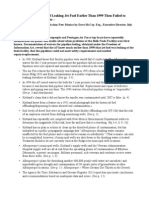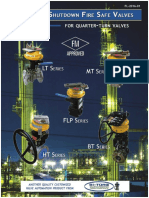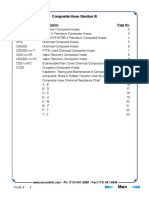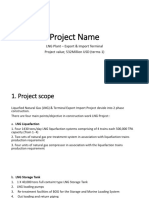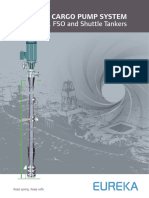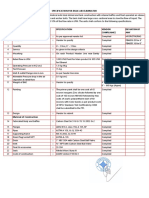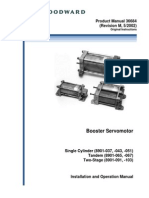RP129
RELIABILITY
OF
FUSIBLE
TIN
BOILER
PLUGS
IN
SERVICE
By
John
R.
Freeman,
Jr.,
J.
A.
Scherrer,
and
S.
J.
Rosenberg
ABSTRACT
In
cooperation
with
the
Steamboat
Inspection
Service
a
study
has
been
made
of
the
reliability
of
fusibleboiler
plugs
of
the
type
installed
in
ships
boilers
under
the
jurisdiction
of
theInspection
Service.
It
has
been
found
that
under
certain
con-
ditions
fusible
plugs
would
not
operate
due
to
the
formation
in
service
of
a
refrac-
toryoxide
replacing
the
tinin
the
fire
end
of
the
plug.
Apparatus
is
described
in
which
plugs
may
be
tested
under
simulated
service
conditions.
The
resultsof
examination
and
tests
of
184
plugs
returned
from
service
indicated
that
10
per
cent
of
all
plugs
in
service
would
not
operate
when
and
if
required.
Recommenda-
tions
regarding
specifications
and
design
of
plugs
to
eliminate
this
dangerous
condition
are
made.
CONTENTS
Page
I.
Introduction
1
II.
Testing
apparatus
3
III.
Results
oftests
4
IV.
Summary
19
V.
General
considerations
and
recommendations
20
VI.
Acknowledgments
21
I.
INTRODUCTION
The
general
rules
and
regulations
provided
by
the
Board
of
Super-
vising
Inspectors
of
the
Steamboat
Inspection
Service
of
the
Depart-
ment
of
Commerce
require
that
every
boiler
under
their
jurisdiction
other
than
boilers
of
the
water-tube
type
shall
be
fitted
with
at
least
two
fusible
plugs.
These
are
fitted
at
various
places
into
the
boiler
eitherin
the
flues,
tubes,
or
combustion
chamber,
in
such
a
position
that
they
are
about
1
inch
or
more
above
the
dangerous
low
water
level
with
one
end
on
the
fireside
and
the
other
end
on
the
waterside.
The
fusible
plug
in
its
usual
form
consists
of
a
bronze
casing,
havingan
external
pipe
thread,
filled
from
end
to
end
with
a
fusible
metal
or
metal
composition
depending
upon
the
temperature
at
which
itis
desired
to
have
it
function.
As
long
as
the
water
level
in
the
boiler
is
maintained
above
the
levelof
the
plugs
the
temperature
of
the
fusible
metal
remains
below
its
melting
point,
but
if
the
water
in
the
boiler
falls
much
below
the
levelof
the
plug
local
heating
occurs,
the
fusible
filling
of
the
plugmelts
and
is
blown
out.
Plugs
for
use
in
marine
boilers
are
generally
of
two
types,
known
as
an
inside
or
outside
type.
This
distinction
is
based
on
the
manner
in
which
the
fusible
plug
is
placed
in
the
boiler.
The
inside
type
of
plug
is
so
designed
that
it
is
screwed
into
the
boiler
shell
from
the
inside
of
the
boiler,
whereas
the
outside
type
is
screwed
into
the
boiler

2
Bureau
of
Standards
Journal
of
Research
[Vol.
4
shell
from
the
outside.
Photographs
of
both
types
are
given
in
Figures
1
(a)
and
1
(6).
On
August
19,
1925,
a
disastrous
boiler
explosion
occurred
on
the
steamer
Mackinac
near
Newport,
K.
I.
The
Bureau
of
Standards
is
responsible
for
the
testing
of
the
quality
of
the
tin
filling
offusibleboiler
plugs
made
to
meet
the
specification
requirements
of
the
Steamboat
Inspection
Service.
Accordingly,
the
latter
was
requested
to
submit
plugs
from
the
exploded
boilerin
order
to
determine
their
conditionand,
if
possible,
whether
they
had
failed
to
function
properly,
thereby
contributing
to
the
cause
of
the
disaster.
Under
date
of
August
31,
1925,
two
plugs
were
submitted
by
the
Steamboat
Inspection
Service
which
were
said
to
have
been
taken
from
the
boiler
of
the
Mackinac.
Examination
of
these
two
plugs
was
made
and
detailed
report
submitted
to
the
Steamboat
Inspection
Service
on
November
4,
1925.
Thisexamination
showed
that
one
of
the
two
plugs
was
in
good
condition,
that
it
still
met
the
specification
requirements
after
approxi-
mately
four
months
ofservice,
and
that
it
would
have
functioned
had
it
been
heated
to
the
melting
point
of
tin
previous
to
the
explosion.
The
second
plug,
however,
showed
evidence
of
serious
deterioration
in
service.
Special
apparatus
was
devised,
described
in
detaillater
in
this
report,
in
which
a
plug
can
be
subjected
to
steam
pressures
at
ele-
vated
temperatures
simulating
service
conditions.
This
plug
was
tested
in
this
apparatus
and
although
subjected
to
steam
pressure
at
a
temperature
of
about
340°
C.
it
did
not
blow
out.
It,
there-
fore,
probably
would
not
have
functioned
in
service
had
it
been
called
upon
to
do
so.
A
plug
in
this
condition
obviously
constitutes
the
very
dangerous
condition
of
a
false
security.
In
view
of
this
fact,
it
was
believed
desirable
to
investigate
in
some
detail
thecondition
of
plugs
when
removed
from
service.
In
aprevious
report
Burgess
and
Merica
*
showed
the
effect
of
small
amounts
of
impurities,
especially
zinc,
on
the
reliability
of
the
fusible
plugs.
It
was
shown
with
0.3
per
cent
zinc,
and
probably
less,
in
the
tin
of
the
plug
that
aprogressive
oxidation
occurred
from
the
water
end
outward
eventually
forming
an
interlocking
network
throughout
the
tin
of
the
filling.
This
network,
due
to
its
high
melting
point
and
relative
strength,
acts
to
prevent
the
proper
functioning
of
the
plug
and
so
constitutes
an
actual
source
of
danger
rather
than
safety.
As
a
result
of
this
work
the
specifications
of
the
Steamboat
Inspection
Service
were
changed
so
asto
require
that
the
tin
in
the
filling
should
contain
not
more
than
0.1
per
cent
lead
and
zinc,
respectively,
and
a
total
impurity
content
of
not
more
than
0.3
per
cent.
In
a
somewhat
later
report
Gurevitch
and
Hromatko
2
pointed
out
some
of
the
precautions
necessary
in
manufacture
to
prevent
con-
tamination
of
the
tin
in
order
to
meet
the
rigid
specification
require-
ment
thatthe
tin
filling
shall
not
contain
more
than
0.3
per
cent
total
impurity.
It
was
shown
that
the
tin
should
be
poured
into
the
casing
at
as
low
a
temperature
as
possible
in
order
to
avoid
con-
tamination
by
solution
of
copper
and
zinc
from
the
casing
if
made
1
Burgess,
Q.
K.,
and
Merica,
P.
D.,
An
Investigation
of
Fusible
Tin
BoilerPlugs,
B.
S.
Tech.
Paper
No.
53;
1915;
Ind.
and
Eng.
Chem,
7,
No.
10,
p.824;1915;
Trans.
Am.
Inst,
of
Metals;
1915-1921.
«
Gurevitch,
L.
J.,
and
Hromatko,
J.
S.,
Tin
Fusible
Boiler
Plug
Manufacture
and
Testing,
Trans.
Am.
Inst.
Min.and
Met.
Engrs.,
64,
p.
227;
1920.
Ro'SZf-'
Scherrer
']
Reliability
of
Fusible
Boiler
Plugs
3
of
brass
and
of
copper
only
if
made
of
bronze.
To
avoid
the
danger
of
contamination
with
zinc,
it
was
recommended
that
only
bronze,
with
little
or
no
zinc,
should
beused
for
thecasing
material.
The
Steamboat
Inspection
Service
requires
thatplugs
shall
be
renewed
at
each
annual
inspection
except
in
cases
where
plugs
were
installed
or
renewed
not
more
than
six
months
prior
to
annual
in-
spection,in
which
case
they
may
be
allowed
to
remain
until
the
next
following
annual
inspection
or
for
a
period
not
to
exceed
18
months.
It
is
often
noted
when
plugs
are
removed
after
service
that
the
tin
in
the
fire
end
has
been
melted
out
and
rather
oftenthe
space
is
found
to
be
partially
filled
with
a
hard
material
resembling
oxide.
Burgess
and
Merica
noted
this
in
some
of
theplugs
they
examined.
They
suggested
that
the
cause
for
the
tin
filling
merely
meltingout
at
the
fire
end
and
leaving
no
oxide
in
some
cases
and
being
oxidized
and
remaining
in
place
in
other
cases
was
probably
due
to
variations
in
operating
conditions
of
the
boilers,
to
variations
of
the
kind
of
coal
used,
and
also
possibly
in
thedevices
used
by
engineers
in
charge
to
stop
up
leaky
plugs.
One
instance
was
cited
bythem
in
which
plaster
of
Paris
had
evidently
been
used
to
stop
a
leaky
plug.
The
question
obviously
arises
whether
the
presence
of
the
oxide
crust
often
noted
in
plugs,
sometimes
after
only
a
few
months'
service,
would
preventproper
functioning.
The
present
investigation
was
planned
to
answer
this
question
by
actually
subjecting
plugs
in
the
laboratory
to
the
steam
pressures
and
temperatures
at
which
they
are
expected
to
function.
The
Steamboat
Inspection
Service
was
requested
to
cooperate
by
sending
to
the
Bureau
of
Standards
plugs
removed
from
service
by
their
inspectors,
together
with
as
complete
a
history
as
possible
oftheir
service
records.
A
totalof
184
plugs
was
examined
or
tested,
the
details
of
which
are
given
in
this
report.
II.
TESTING
APPARATUS
Special
equipment
was
designed
for
the
purpose
of
testing
these
plugs
in
the
laboratory
under
simulated
service
conditions.
The
apparatus
used
for
the
so-called
blow-out
tests
is
shown
in
Figure
2
and
is
illustrated
diagrammatically
in
Figure
3.
A
pressure
of
over
200
lbs.
/in.
2
and
simultaneous
temperature
of
over
300°
C.
can
be
obtained.
In
general,
for
reasons
ofsafety,
thepressure
was
kept
low.
The
essential
difference
between
the
functioning
of
a
plug
in
this
apparatus
and
under
service
conditions
is
that
in
service
the
fire
end
is
undoubtedly
at
a
higher
temperature.
In
the
apparatus
itis
always
approximately
at
the
same
temperature
as
the
steam
or
inside
end.
It
is
believed,
however,
that
this
difference
would
not
affect
the
results,
since
the
functioning
of
the
plug
is
dependent
only
upon
the
melting
of
the
tin,
and
the
manner
in
which
the
heat
is
applied
would
make
little
difference.
All
plugs
were
tested
in
the
apparatus
with
the
pressure
on
the
same
(large)
end
asin
service.
The
pressure
gauge
was
installed
only
in
the
later
tests.
That
steam
pressure
was
present
throughout
any
one
test
was
always
indicated
by
slightly
opening
asafety
valve
on
the
top
of
the
boiler.
This
was
always
done
at
the
end
of
any
test
in
which
a
plug
failedto
blow.
Bureau
of
Standards
Journal
of
Research
[Vol.
4
The
temperature
of
the
plug
was
determined
in
some
cases
by
inserting
a
thermocouple
in
the
casing,
as
indicated
in
Figure
2.
A
temperature
difference
of
as
much
as
80°
C.
was
noted
in
one
instance
between
the
temperature
of
the
steam
in
thepressure
chamber
and
the
temperature
of
thecasing
of
theplug;
the
latter
was
always
cooler.
In
general,
however,
the
temperature
difference
was
much
less
than
this.
The
difference
noted
depended
largely
upon
the
rate
of
heating.
In
case
a
plug
did
not
blow,
the
temperature
of
the
pressure
chamber
was
maintained
a
sufficient
length
of
time
to
per-
mit
a
more
even
distribution
of
temperature
to
be
established.
Also,
in
all
cases
where
a
plug
failed
to
blow,
except
as
noted
in
Table
1,
the
tin
was
found
to
have
been
melted
during
the
test
which
proved
Thermometer
Thermometer
Boiler
Thermocouple
Figure
3.
Schematic
representation
of
testing
apparatus
shown
in
Figure
2
that
a
temperature
greater
than
the
melting
point
of
the
filling
had
been
reached.
III.
RESULTSOF
TESTS
The
resultsof
all
tests,
together
with
available
service
data,
are
given
in
Table
1.
The
plug
number
is
thatassigned
to
the
plug
on
receipt
from
the
Steamboat
Inspection
Service.
The
heat
number
is
the
original
number
given
by
the
manufacturer.
The
condition
is
that
indicated
by
inspection
on
receipt
in
the
bureau
laboratory.
The
data
on
ships
fromwhich
plug
was
removed,
type
of
boiler,
boiler
pressure
and
length
of
service
are
those
given
by
the
inspectors
of
the
Steamboat
Inspection
Service.







